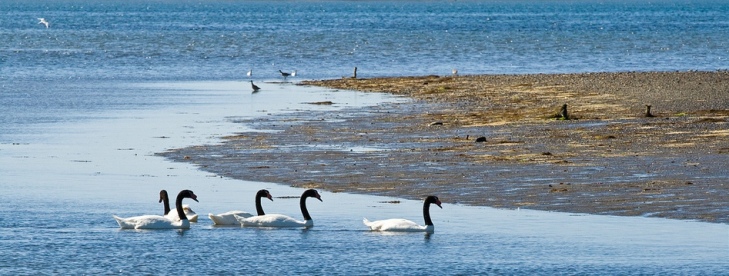Adaptations-Walking with two left feet!
The black-necked swan is the smallest of its genus, ranging from
40-50 inches long.
Besides being small in size it also has very short legs that are
positioned far back on its body.
This adaptation is excellent for swimming, making the
black-necked swan the most aquatic and best swimmer of the swans,
while also making it
the most awkward on land.
In fact, the positioning of its legs is so far off center
that the black-necked swan is barely able to propel walk on solid
ground. Their short
legs also make taking off and landing trickier, but once in the air
they are one of the swiftest-flying swans.
Despite their small wing span (15-18 inches), black-necked
swans are the fastest of the eight swan species, they can fly up to
50 miles per hour!
that are
positioned far back on its body.
This adaptation is excellent for swimming, making the
black-necked swan the most aquatic and best swimmer of the swans,
while also making it
the most awkward on land.
In fact, the positioning of its legs is so far off center
that the black-necked swan is barely able to propel walk on solid
ground. Their short
legs also make taking off and landing trickier, but once in the air
they are one of the swiftest-flying swans.
Despite their small wing span (15-18 inches), black-necked
swans are the fastest of the eight swan species, they can fly up to
50 miles per hour!
This bird also has many adaptations to accommodate its diet.
To aid in the consumption of aquatic plants, this swan has
developed a jagged beak that allows it to filter feed nutrients from
the water. A rough
tongue is another adaptation that allows the black-necked swan to
grip the slippery
submergent vegetation
that it feeds on.
